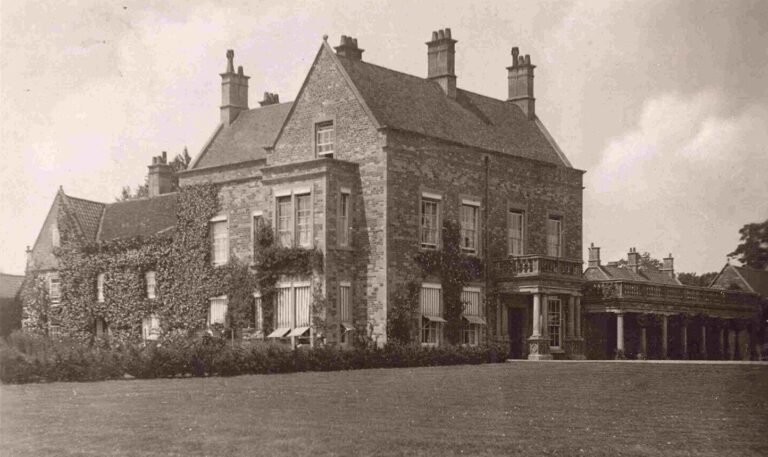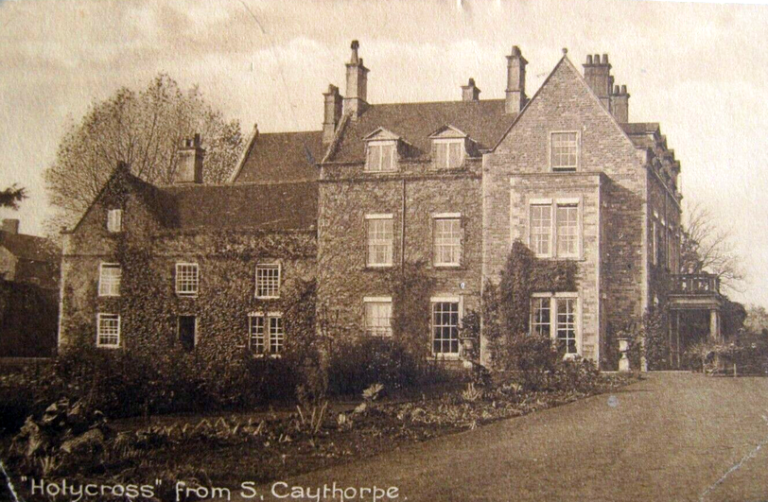Holy Cross House was between High Street and Old Lincoln Road in Caythorpe, with the back of the house opposite South Parade and the Spar shop. It was approached by a drive along at what is now Holy Cross Gardens.
It was believed to have been built in the early 17th century, with a parapet and extra windows added later.
Lt Col Edmund Royds and his wife Rachel (daughter of Col Fane of Fulbeck Hall) lived at Holy Cross from 1900 to 1920 after having had a larger Queen Anne style wing added to the building.
In 1944 the 1st Airborne Signals Regiment was based in and around Caythorpe prior to the attack on Arnhem and used Holy Cross House as their Headquarters.
After the war, Holy Cross was bought by John William Oxby, a district councillor. In 1949 he sold one of the outhouses to the village for £2,000 to use a war memorial hall (now village hall). Oxby seems to have rented the house out, until his death in 1959.
In March 1961 the property was sold off (see newspaper extract). And around 1963 construction of the Holy Cross housing estate began in the grounds and the house was abandoned.
In 1966 two ghost hunters spent a night in the empty building, hoping to see ‘Lady Grey’, the ghost of a woman which was supposed to appear out of some cupboards in the Elizabethan part of the house. Soldiers who’d stayed there during war described the old part of the house as creaky, so it’s not surprising that ghost stories were made up over the years. Many other places have stories about a grey lady. The two ghost hunters saw nothing.
By the late 1960s the house was partly demolished and the parish council complained that the remains (owned by Middlebrook Builders) had become unfit, unsafe and unsightly. In 1970 the district council (then West Kesteven Rural Council) called for its complete demolition.
Some of the old wooden fireplaces were saved and installed in the Finch Hatton Arms in Ewerby.


